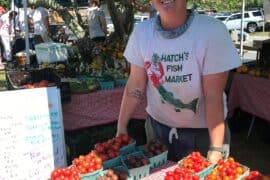Welcome to Your Guide on New Zealand Traditional Food Recipes!
Hey there, awesome parents! Are you ready to embark on a delightful culinary journey, exploring the sumptuous flavours of New Zealand? You’re in luck because we are about to dive into a world where food is not just sustenance but an expression of cultural heritage and family love. We’re so excited to share with you some of the most cherished New Zealand traditional food recipes that will bring a taste of Kiwi culture right to your home.
Traditionally, New Zealand’s cuisine has been shaped by its indigenous Maori people and the various groups that have settled in this beautiful island country over time. This medley of cultural influences has resulted in a unique and varied food scene that’s just waiting for you to explore. Whether it’s for a special family gathering or just a fun day cooking with the kids, these recipes will certainly add a dash of adventure to your meals!
Getting Ready to Cook
Before we whisk away into the recipes, there are a few things you might want to keep in mind:
- Some ingredients might be unique to New Zealand, but we’ll try our best to suggest alternatives that you can find locally or online.
- Cooking traditional food is also about the experience, so feel free to involve your kids in the process and make it a learning opportunity!
- And remember, cooking times are just a guide—traditional cooking methods can vary, so use your instincts and have fun with it!
Hangi – The Earth Oven
Let’s start with the hangi, the traditional Maori method of cooking food using heated rocks buried in a pit oven. This might be a bit challenging to replicate at home, but don’t worry! We have a workaround that can give you a taste of hangi without needing to dig up your backyard.
Hangi-style Chicken and Vegetables (Oven Version):
- Preparation time: 30 minutes
- Cooking time: 2 hours
Ingredients:
- 1 whole chicken
- 2 sweet potatoes
- 4 potatoes
- 2 carrots
- 1 cup of spinach leaves
- Seasoning: salt, pepper, and herbs
- Liquid smoke (optional, for that authentic smoky flavour)
- Aluminium foil
Instructions:
- Preheat your oven to 375°F (190°C).
- Rub the chicken with salt, pepper, and herbs. If using, add a small amount of liquid smoke for flavour.
- Cut the vegetables into large chunks and season.
- Wrap the chicken and vegetables separately in aluminium foil, creating individual packets.
- Create another layer of foil around each packet for insulation, simulating the earth cover of a hangi.
- Place the packets on a baking tray and cook in the oven for approximately 2 hours or until the chicken is fully cooked and the vegetables are tender.
- Once cooked, let it rest for a few minutes before serving. Be careful when opening the foil packets—they will be steaming hot!
While it’s not quite the same as a traditional hangi, this method will give you a delicious and tender meal that is reminiscent of the real deal. The liquid smoke adds that earthy flavour, making it a super fun dinner adventure for the whole family!
Up next, we’ll take a look at a dessert that is hotly contested across the Tasman Sea but is an undeniable part of New Zealand’s culinary repertoire — the pavlova. But before we get to the sweet treats, let’s keep the main course momentum going with yet another iconic Kiwi dish.

5 Insightful Tips for Parents Making Traditional New Zealand Eats
Gather ’round, nurturing family chefs! Preparing traditional New Zealand cuisine with your children can become an incredible bonding activity filled with learning and laughter. To ensure that your kitchen transforms into an exciting cultural hub, here are 5 things every parent should know before starting:
1. Embrace Unique Ingredients
The extraordinary Kiwi flavors often involve unique ingredients like kumara (sweet potatoes), silver fern root, and Manuka honey. Make it an educational scavenger hunt by having your kids help find these items in local markets or specialty stores. Encountering new components can spark curiosity and bring surprising new tastes to your family’s palate.
2. Be Ready for Substitutes
Some authentic New Zealand ingredients might be a tad tricky to source outside of Aotearoa. But worry not! Get creative with your kids and find suitable substitutes that retain the essence of the original dish. It’s a good opportunity to teach flexibility and improvisation — valuable skills in and out of the kitchen!
3. Storytelling Through Food
Maori culture is rich with stories and traditions, many of which are tied to food. As you cook, share these tales with your little ones. Tell them about the hangi’s significance during community gatherings, or the legend behind the creation of pavlova. Every recipe has a story, and knowing it makes the meal all the more special.
4. Safety First in Kitchen!
While cooking is fun, safety in the kitchen is paramount. Always supervise your kids, especially when handling hot surfaces or sharp tools. Instill a sense of responsibility by designating age-appropriate tasks — little ones can wash veggies, while older children might help with measuring ingredients. It’s a great way to teach kitchen safety and build trust!
5. Patience & Practice Go a Long Way
Traditional recipes might not come out perfect on the first try, and that’s okay! Encourage your children to practice patience and resilience. Each attempt is a learning experience, whether it results in a scrumptious success or a hilarious flop. Laugh together, enjoy the process, and savor every bite of your Kiwi culinary creations.
Now that we’re armed with knowledge and enthusiasm, let’s continue our delicious journey with yet another treasured recipe. Our next traditional specialty is bound to appeal to all the meat lovers out there!
Roast Lamb – The Unofficial National Dish
New Zealand is renowned for its high-quality lamb, which is why no Kiwi traditional food guide would be complete without a classic roast lamb recipe. Juicy, tender and oh-so-satisfying, preparing this dish might become a new Sunday tradition in your household.
Classic Roast Lamb with Rosemary and Garlic:
- Preparation time: 20 minutes
- Cooking time: Depends on the size of the lamb and your preference for doneness
Ingredients:
- 1 leg of lamb (about 2kg)
- 4 cloves of garlic
- 1 tablespoon of fresh rosemary leaves
- 3 tablespoons of olive oil
- 1 cup of red wine (optional for a richer flavor)
- Salt and freshly ground black pepper to taste
Instructions:
- Preheat your oven to 356°F (180°C).
- Chop the garlic and rosemary, and mix it with olive oil, salt, and pepper in a bowl.
- Pat the lamb dry with paper towels and then rub the herb mixture all over the meat.
- If you have time, let the meat marinate for at least an hour (or even overnight in the fridge) for intensified flavor.
- Place the lamb in a roasting pan and, if using, pour the red wine over it.
- Cover with foil and roast in the oven. Cooking times will vary depending on size and desired doneness. A general guide is 25 minutes per 500g for medium-rare.
- Remove the foil in the last 30 minutes of cooking to allow the exterior to brown and crisp up.
- Let the roast rest for about 15 minutes before carving. Serve with a side of roasted seasonal vegetables and enjoy!
This roast lamb dish encapsulates the simplicity and flavor that characterizes New Zealand’s culinary traditions. It’s a meal that will surely impress the family and become a pillar of your cooking repertoire.
There you have it, folks — a snippet of New Zealand on your dining table. Enjoy these traditional Kiwi recipes with your loved ones, and watch as your dinner table becomes a place of cultural discovery and togetherness. Happy cooking, and stay tuned for even more delightful New Zealand dishes right around the corner!
See more great Things to Do with Kids in New Zealand here. For more information see here
Disclaimer
The articles available via our website provide general information only and we strongly urge readers to exercise caution and conduct their own thorough research and fact-checking. The information presented should not be taken as absolute truth, and, to the maximum extent permitted by law, we will not be held liable for any inaccuracies or errors in the content. It is essential for individuals to independently verify and validate the information before making any decisions or taking any actions based on the articles.




